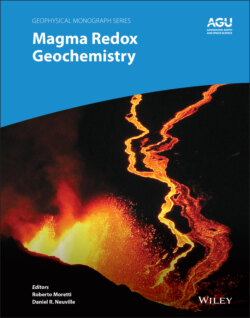Читать книгу Magma Redox Geochemistry - Группа авторов - Страница 49
3.4.1. Linking the fO2 of Volcanics and Mantle Lithologies
ОглавлениеLinking magmatic fO2 to melt residue fO2 and, ultimately, to the fO2 of the subsolidus convecting mantle presents a grand challenge to the fields of petrology, experimental petrology, and modeling. When the mantle first begins to melt at infinitesimally small melt fractions, the composition of residual silicate phases will not change significantly, and the fO2 of the unmelted, solid mantle source will impose fO2 on low degree partial melts (whether silicate melts or carbonated silicate melts), and set the melt’s Fe3+/∑Fe ratio. However, at some point during adiabatic ascent, the melt fraction will grow to an extent that the composition of the solid phases are themselves modified, and the fO2 of the assemblage (solid + melt) changes. Examples of anticipated changes during melting that could affect fO2 include the exhaustion of reduced carbon or sulfur phases from the solid assemblage (Lee et al., 2012; Stagno et al., 2013), and an increase of the Fe3+/∑Fe ratio of spinel resulting from Al/Fe3+ exchange with the melt that favors concentrating Fe3+ in the spinel (Ballhaus et al., 1991; Davis & Cottrell, 2018). At this point, the fO2 of the mantle will change in ways that experiments and models have not yet elucidated. Indeed, experiments that investigate fO2 as a variable in the context of partially melting the mantle are nascent (Ballhaus et al., 1991; Davis & Cottrell, 2018; Sorbadere et al., 2018), and stand as a challenge for the future (see Section 3.5). However, once melt and residue separate, melt fO2 changes little relative to the QFM buffer during volatile‐undersaturated adiabatic ascent (Kress & Carmichael, 1991). Thus, at ridges, near primary basaltic melts should serve as accurate proxies for average mantle source conditions (e.g., Carmichael, 1991); however, such accuracy may not extend to mantle rocks, and volcanic rocks from other settings.
Once melts become volatile saturated or begin to undergo assimilation‐fractional crystallization processes within the crust, the relationship between mantle source and magmatic fO2 may become more tenuous. Here we briefly review processes that may modify melt fO2 signal from source to surface: degassing and crystal fractionation within thick crust.
